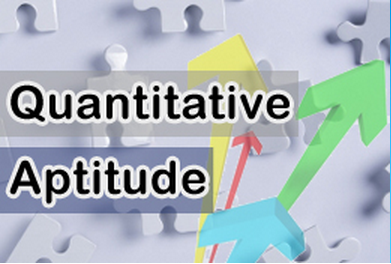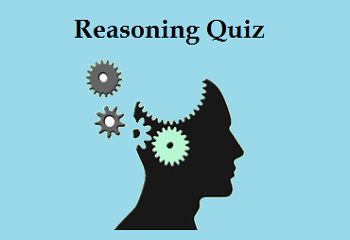Hello Aspirants. Welcome to Online Quantitative Aptitude section in AffairsCloud.com. Here we are creating question sample From DATA SUFFICIENCY topic, which is common for all the IBPS,SBI exam RBI,,SSC and other competitive exams. We have included Some questions that are repeatedly asked in exams !!!
Bank PO Level Questions :-
Q(1 – 5) Each of the questions below consists of a question and two statements numbered I and II given below it. You have to decide whether the data provided in the statements are sufficient to answer the question. Read all the three statements and give answer: –
A. If the data in statement I alone is sufficient to answer the question.
B. If the data in statement II alone is sufficient to answer the question.
C. If the data either in statement I alone or statement II alone are sufficient to answer the question.
D. If the data given in both I and II together are not sufficient to answer the question.
E. If the data in both the statements I and II together are necessary to answer the question.
- What is the speed of the train whose length is 210m?
I. The train crosses another train of 300m length running in opposite direction in 10s
II. The train crosses another train running in the same direction at the speed of 60kmph in 30s.Answer – E. if the data in both the statements I and II together are necessary to answer the question
Explanation :
L1 = 210m(Given)
From Statement I, L2 = 300m
L1 + L2 = 210m +300m =510m
S1 + S2 = [D/T] = 510/10 = 51m/s
From Statement II,
S2 = 60kmph = 60*(5/18) = 50/3 m/s
S1 – S2 = 510/30 = 51/3 => S1-50/3 = 51/3
S1 = 101/3 m/s
Thus both the statements are required to answer the question. - What is the man’s speed in still water?
I. The speed of the stream is one-third of the man’s speed in still water.
II. In a given time, the man can swim twice as far with the stream as he can against it.Answer – D. If the data given in both I and II together are not sufficient to answer the question.
Explanation :
From Statement I, Speed of stream = 1/3 * Man’s speed = Man’s speed = 3* Speed of stream
From Statement II, Man’s speed = 2* Speed of stream
Thus both the statements are not sufficient to answer the question. - What is the Ratio of male to female officers in the police force in town T?
I. The number of female officers is 250 less than half the number of male officers.
II. The number of female officers is 1/7 the number of male officers.Answer – B. If the data in statement II alone is sufficient to answer the question.
Explanation :
From Statement I,
Number of male officers = x
Number of female officers = x/2 – 250
Ratio can’t be calculated from Statement I.
From Statement II,
Number of male officers = x
Number of female officers = x* 1/7
Ratio = x/(x/7) = 7:1
Thus Statement II alone is sufficient to answer the question. - What is the rate of the Compound Interest?
I. A certain amount invested at the compound interest rate amounts to Rs. 1331
II. The amount was invested for a period of three years.Answer – D. If the data given in both I and II together are not sufficient to answer the question.
Explanation :
Principal is not given, We can not find the rate of CI from both statements. - What is the difference between the two digits in a two-digit number?
I. The sum of the two digits is 8.
II. 1/5 of that number is 15 less than 1/2 of 44Answer – B. If the data in statement II alone is sufficient to answer the question.
Explanation :
Statement I not sufficient
From statement II,
1/5 * x = 1/2 *44 -15
x = 35, Difference between the two digits is = 2 - A, B, and C together start a business with a total investment of 15000. At the end of the year, the total profit is Rs.3000. What is A’s share in the profit?
I. A’s contribution is 3/2 times of B’s
II. B’s contribution is twice that of C.
III. A’s contribution is thrice that of C.
A. I and II
B. II and III
C. All I, II and III
D. Any two of the three
E. None of the AboveAnswer – D. Any two of the three
Explanation :
C = x
From I and II
C = x, B = 2x, A = (3/2 * 2x) => A = 3x
From II and III
C = x, B = 2x, A = 3x
From I and III
C = x, A = 3x, B = (2/3 * 3x) => B = 2x
A:B:C = 3:2:1, A’s share = (3000 * (3/6)) = 1500
Thus any two of the three statements, are sufficient to answer the question. - What is the monthly income of Mr. X?
I. Mr. X spends 85% of his income on various items and remaining amount is saved
II. Monthly savings of Mr. X are 4500
III. Out of the total money spent by Mr.X in a month, one-fifth is spent on food and remaining amount of Rs.20400 on other items.
A. Only II
B. Only III
C. All the given statements are Insufficient
D. Only either II or III
E. None of the AboveAnswer – E. None of the Above
Explanation :
Let the income of Mr.X = y
From I and II
15% of y = 4500 => y = 30000
From II and III
4/5th of expenditure = 20400 => Expenditure = Rs. 25500, Savings = Rs.4500
Income = 25500 + 4500 = 30000
From I and III
4/5 of 85% of x = 20400
x = 30000
Thus any two of the three statements, are sufficient to answer the question. Ans option – None of the Above - What is the present age of Rahul?
I. The present age of Rahul is half of his father’s age
II. After 5 years, the ratio of ages of Rahul and his father is 6:11
III. Rahul is younger to his brother by five years.
A. I and II
B. I and III
C. Can not be determined
D. II and III
E. All of the AboveAnswer – A. I and II
Explanation :
From Statement I and II,
Rahul’s age = x, His father’s age = 2x
x+5/2x+5 = 6/11
x=25 year - What was the profit earned on the CP by Ramesh by selling an article?
I. He got 15% concession on labelled price in buying that article
II. He sold it for Rs.3060
III. He earned a profit of 2% on he labelled price in buying that article.
A. Only I and II
B. Only II and III
C. Only either I or III and II together are required
D. All I, II and III together are required
E. None of the AboveAnswer – D. All I, II and III together are required
Explanation :
Labelled price -x
From statement I, CP = 85% of x
From statement II and III, 2 = (3060 – x/ x)*100 x=3000
CP= 85% of 3000 = 2550
Thus All I, II and III together are required. - What will be the share of R in the profit earned by V, R and A together?
I. They together invested an amount of Rs.54000 for a period of 1 year
II. R’s investment was 25% less than V’s and 50% more than A’s.
III. The profit of V is 4000 more than that of A.
A. I and II together
B. Only II
C. II and either I or III only
D. II and III together
E. None of the AboveAnswer – D. II and III together
Explanation :
Let A’s investment = x
From statement II
R’s investment = 150% of x = 1.5x
V’s investment = z = R’s investment was 25% less than V’s = 75% of z = 1.5x => 2x
A, V, R profit ratio = x : 2x :1.5x = 2:4:3
Let profit ratio of A, V, R be 2y, 4y and 3y
From statement III
4y-2y = 4000
y =2000
R’ share = Rs.6000
Statement II and III together are sufficient to answer the question.



